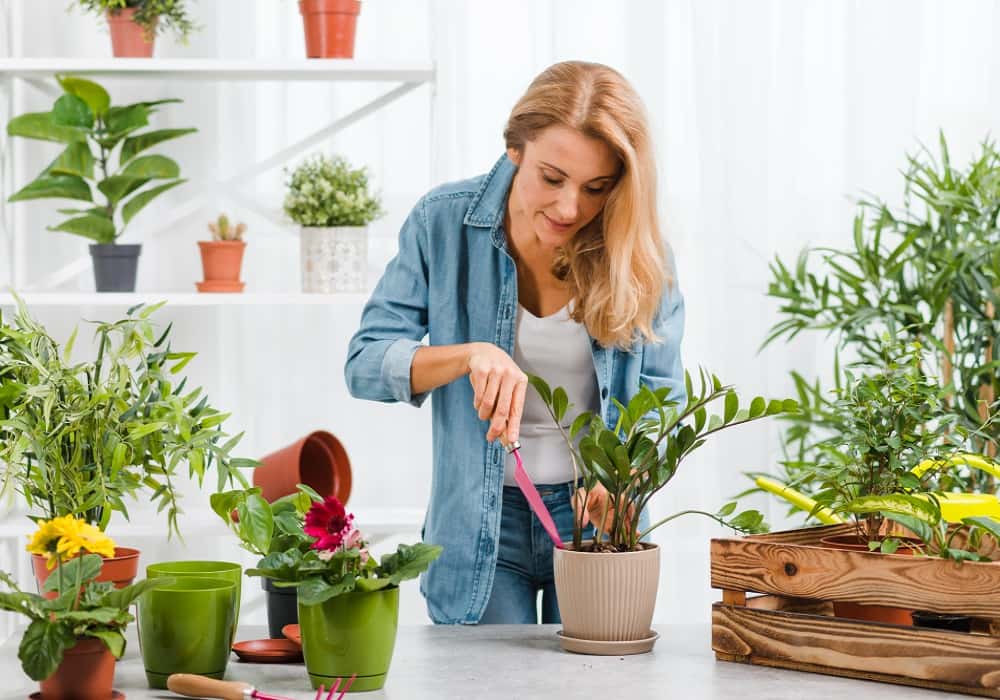Essential Gardening Tips for Beginners in India: Your Green Thumb Journey
Gardening can be an incredibly rewarding hobby, especially in a country like India, where diverse climates allow for a wide variety of plants to thrive. Whether you’re looking to grow vegetables, flowers, or herbs, this guide will provide you with essential tips to kick-start your gardening journey. For beginners, it’s important to understand the basics of gardening, how to adapt to India’s weather conditions, and how to choose the right plants. Here’s everything you need to know about gardening for beginners in India.
1. Start Small and Simple
As a beginner, it’s easy to get excited and try to grow everything at once. However, starting small is key to avoiding being overwhelmed. Pick a few plants that are easy to maintain and require minimal effort. Some ideal options for beginners in India are tomatoes, mint, marigold, spinach, and basil. These plants grow quickly and don’t need constant attention.
2. Know Your Climate and Region
India has a diverse climate, ranging from tropical in the south to temperate in the north. It’s crucial to understand your region’s climate to pick the right plants for your garden. For example:
- In northern India, plants like spinach, radishes, and lettuce thrive during winter, while okra and tomatoes do well in summer.
- In southern India, you can grow tropical plants like bananas, chillies, and brinjal all year round.
3. Choose the Right Soil
Healthy plants begin with healthy soil. The soil in your garden should be rich in nutrients and well-drained. For gardening in India, a combination of compost, cocopeat, and sand works best. Cocopeat helps in moisture retention, while compost provides essential nutrients to the plants. If you’re working with container gardening, ensure the pots have proper drainage holes to avoid waterlogging.
4. Watering: The Golden Rule
Watering can be tricky for beginners, but it’s one of the most critical factors for plant health. Overwatering or underwatering can harm plants. As a rule of thumb:
- Check the soil before watering; it should be dry about 1 inch below the surface.
- Water early in the morning or late in the evening to prevent quick evaporation.
- Use a watering can with a gentle nozzle to avoid disturbing the soil and roots.
5. Sunlight is Key
Most plants need at least 4-6 hours of sunlight to grow well. Choose a spot in your garden or balcony that gets ample sunlight. If you’re growing indoor plants, opt for plants like peace lilies, snake plants, or aloe vera, which require less sunlight but still flourish indoors.
6. Use Organic Fertilizers
To give your plants the best chance of thriving, use organic fertilizers. Composting kitchen waste like vegetable peels, eggshells, and coffee grounds is a great way to add nutrients to your soil. You can also buy organic manure from local nurseries. Chemical fertilizers may give quick results, but they can harm the soil in the long run.
7. Pest Control
Indian gardens are often prone to pests like aphids, mealybugs, and caterpillars. Opt for natural remedies to keep them at bay. Neem oil, garlic spray, and soap water are effective and non-toxic solutions to pest problems. Regularly inspect your plants for signs of pest infestations and take action immediately.
8. Mulching: A Simple Trick
Mulching is an easy way to retain moisture in the soil, especially in hot climates. Use organic materials like dried leaves, straw, or bark to cover the soil surface. This helps reduce evaporation, keeps the soil cool, and prevents weed growth.
9. Be Patient
Gardening is a process of trial and error. Not every plant will thrive, and some will take time to show growth. Don’t get discouraged by failures; they are part of the learning experience. The key is to observe, adjust, and learn as you go along.
FAQs About Gardening for Beginners in India
1. What are the best vegetables for beginners to grow in India?
Some easy-to-grow vegetables in India for beginners include tomatoes, spinach, chillies, okra, and mint. These plants are low maintenance and grow well in Indian climates.
2. How much water do plants need in Indian weather?
The water needs of plants depend on the climate. In hotter regions, you may need to water daily, while in cooler climates, watering every alternate day may suffice. Always check the soil moisture before watering.
3. Can I start gardening in small spaces?
Absolutely! Even if you have limited space, you can start container gardening on your balcony or terrace. Use pots, hanging baskets, and even recycled containers to grow herbs, vegetables, and flowers.
4. What is the best time to plant in India?
In India, the best time to plant varies depending on the region. For most parts, the monsoon and post-monsoon periods (June to November) are ideal for planting as the climate is favorable for growth. However, winter gardening is also popular in northern India.
5. How can I protect my plants from pests naturally?
Using natural pest control methods like neem oil spray, garlic spray, or soap water is a great way to protect your plants without using harmful chemicals. Regularly check for pests and apply these solutions if necessary.
Conclusion
Gardening for beginners in India can be a fulfilling and stress-relieving activity. By following these tips, you can create a thriving garden whether you have a spacious yard or a small balcony. With patience, the right knowledge, and a little practice, you’ll soon have your own lush green space filled with plants you can be proud of. Happy gardening!






